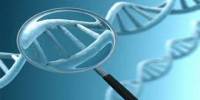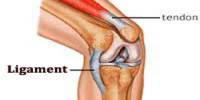The process by which a cell grows and divides to produce two daughter cells is known as cell proliferation. It refers to the process by which cells multiply and proliferate. It is a fundamental biological phenomenon that is essential for the growth, development, and preservation of tissues and organs in multicellular organisms. Cell proliferation is tightly regulated in order to ensure that cells divide and reproduce in a balanced and coordinated manner.
Cell proliferation causes an exponential increase in cell number and is thus a rapid tissue growth mechanism. Cell proliferation necessitates the simultaneous occurrence of cell growth and cell division in order for the population’s average cell size to remain constant. Cell division can occur without cell growth, resulting in many progressively smaller cells (as in zygote cleavage), whereas cell growth can occur without cell division, resulting in a single larger cell (as in neuron growth). Thus, despite the fact that these terms are sometimes used interchangeably, cell proliferation is not synonymous with cell growth or cell division.
Stem cells divide to produce proliferating “transit amplifying” daughter cells, which later differentiate to form tissues during normal development and tissue growth, tissue regeneration after injury, or cancer. The rate of cell proliferation minus the rate of cell death determines the total number of cells in a population.
Key points about cell proliferation include:
- Cell Cycle: The cell cycle, a series of events that leads to cell division, tightly controls it. G1 (cell growth), S (DNA synthesis), G2 (preparation for cell division), and M (mitosis or cell division) are the different phases of the cell cycle.
- Cell Division: Cell division is accomplished through either mitosis or meiosis. A single cell divides into two genetically identical daughter cells with the same number of chromosomes as the parent cell during mitosis. Meiosis, on the other hand, is a type of cell division that occurs in germ cells and results in cells with half the number of chromosomes, which is important for sexual reproduction.
- Regulation of Cell Proliferation: Various signaling pathways and checkpoints tightly regulate the cell cycle to ensure accurate DNA replication and proper cell division. Cyclins and cyclin-dependent kinases (CDKs) are key proteins involved in the regulation of the cell cycle.
- Cellular Reproduction: Cell proliferation is essential for the growth and development of an organism. During development, cells divide to increase the number of cells, and this process is also critical for tissue repair and regeneration.
Factors Influencing Cell Proliferation
Growth factors, hormones, nutrients, and environmental cues are all external and internal factors that influence cell proliferation. The extracellular matrix, the microenvironment surrounding cells, also influences cell proliferation.
Cell proliferation research is critical for understanding basic biological processes and developing treatments for diseases characterized by abnormal cell growth. To gain insight into both normal and pathological conditions, researchers investigate the molecular mechanisms that control cell proliferation.
















